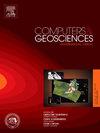ETASbootstrap 0.2.0: A flexible R package for computing bootstrap confidence intervals for parameters in the space–time epidemic-type aftershock sequence model, with four case studies
IF 4.2
2区 地球科学
Q1 COMPUTER SCIENCE, INTERDISCIPLINARY APPLICATIONS
引用次数: 0
Abstract
The space–time epidemic-type aftershock sequence (ETAS) model is a widely used tool for stochastic declustering of earthquake data catalogs and short-term aftershock forecasting. However, confidence intervals derived from asymptotic standard errors (ASEs) of parameter estimates based on maximum-likelihood theory can sometimes be misleading and it was recently suggested to use bootstrap confidence intervals instead (Dutilleul et al., 2024). The ETASbootstrap package was developed to facilitate the use of the bootstrap resampling procedure and its associated confidence intervals for a direct comparison with asymptotic ones. In this paper, the statistical underpinnings of the package are first presented, including the space–time ETAS model with its multiple parameters, the importance of edge effects, and the bootstrapping algorithm. Then, three earthquake data catalogs (Japan, Italy, Iran) are used as input to ETASbootstrap 0.2.0, which is more flexible regarding the shape of spatial windows than the original version. In all cases, a discrepancy was observed between bootstrap and asymptotic confidence intervals for some of the space–time ETAS model parameters. It was possible to relate this discrepancy to the presence of outliers and a resulting lack of normality, which compromised the asymptotic approximation of the variability of the maximum-likelihood estimates (ML estimates). The results suggest that the two types of confidence intervals should be used in practice, especially for earthquake data catalogs of moderate size.
ETASbootstrap 0.2.0:一个灵活的R包,用于计算时空流行型余震序列模型中参数的自举置信区间,有四个案例研究
时空流行型余震序列(ETAS)模型是一种广泛应用于地震资料目录随机聚类和短期余震预报的工具。然而,基于最大似然理论的参数估计的渐近标准误差(ase)得出的置信区间有时会产生误导,最近有人建议使用bootstrap置信区间来代替(Dutilleul et al., 2024)。开发ETASbootstrap包是为了方便使用bootstrap重采样过程及其相关置信区间,以便与渐近置信区间进行直接比较。本文首先介绍了该包的统计基础,包括具有多参数的时空ETAS模型、边缘效应的重要性以及自举算法。然后,使用三个地震数据目录(日本,意大利,伊朗)作为ETASbootstrap 0.2.0的输入,该版本在空间窗口形状方面比原始版本更灵活。在所有情况下,观测到一些时空ETAS模型参数的自举置信区间与渐近置信区间之间存在差异。有可能将这种差异与异常值的存在以及由此导致的正态性缺失联系起来,这损害了最大似然估计(ML估计)变异性的渐近近似。结果表明,在实际应用中,特别是中等规模的地震资料目录,应采用这两种置信区间。
本文章由计算机程序翻译,如有差异,请以英文原文为准。
求助全文
约1分钟内获得全文
求助全文
来源期刊

Computers & Geosciences
地学-地球科学综合
CiteScore
9.30
自引率
6.80%
发文量
164
审稿时长
3.4 months
期刊介绍:
Computers & Geosciences publishes high impact, original research at the interface between Computer Sciences and Geosciences. Publications should apply modern computer science paradigms, whether computational or informatics-based, to address problems in the geosciences.
 求助内容:
求助内容: 应助结果提醒方式:
应助结果提醒方式:


